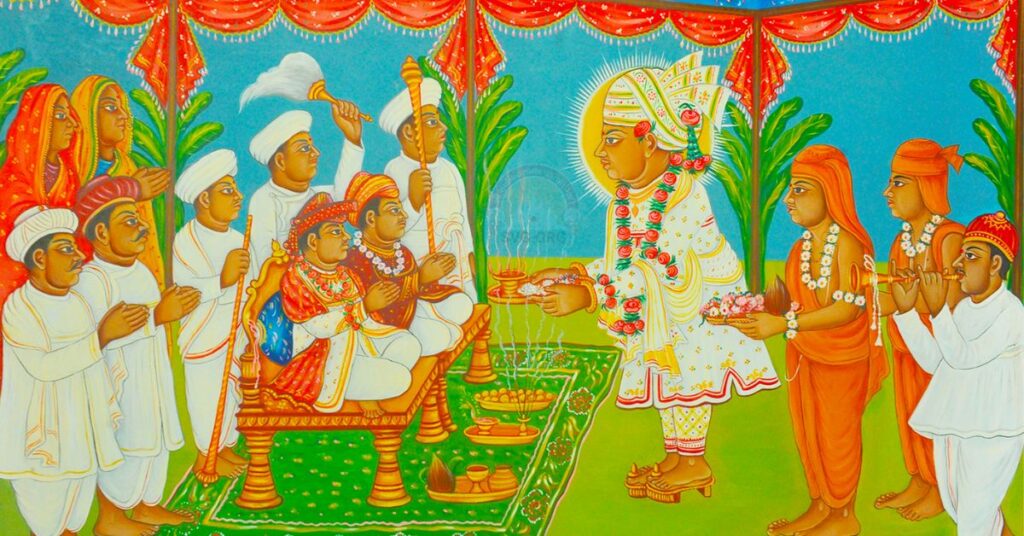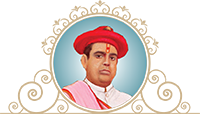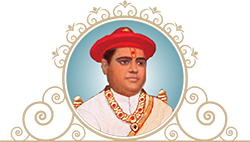Table of Contents
- Dharmavanshi Acharya Parampara
- The Role of Dharmavanshi Acharyas
- Dual Acharyaship
- The Authority of Desh Vibhag no Lekh

Dharmavanshi Acharya Parampara
In the Swaminarayan Sampraday, Dharmakul refers to the sacred lineage of spiritual leaders (Guru Parampara), beginning with Bhagwan Swaminarayan and extending through the present and future Acharyas. To be “Dharmavanshi” means to belong to the lineage of Dharmadev, Bhagwan Swaminarayan’s father.
Becoming “Dharmakul Na Aashrit” (seeking refuge in the Dharmakul), as mentioned in Gadhada Pratham 1, signifies being initiated into the authentic Swaminarayan Sampraday by the respective Acharyas. This initiation is essential for several reasons:
- To become a genuine Swaminarayan devotee.
- To perform authentic Bhakti, not only for worldly gains but also for the ultimate goal of salvation.
- To attain the divine abode (Akshardham) and serve Bhagwan Shree Swaminarayan.
The initiation of all Swaminarayan followers, including Sadhus (saints), by the respective Acharya, is what qualifies one as part of the authentic Swaminarayan Sampraday.
The Role of Dharmavanshi Acharyas
Bhagwan Shree Swaminarayan declared, “I shall always remain within the Acharyas from the family of My father, Dharmadev.” He instructed all his followers to regard the Acharyas as the highest authority and to serve them with unwavering loyalty and humility.
By the time Bhagwan Shree Swaminarayan was preparing to return to his divine abode (Akshardham), he had established six magnificent Shikharbandh (domed) temples. The number of Satsangis (devotees) exceeded half a million, and there was a substantial number of Sadhus, Parshads, and Sankhya Yogis. It became clear that managing the expanding Swaminarayan Sampraday would require leadership with immense administrative and persuasive capabilities—a task deemed beyond any mortal being according to the tenets of the Sampraday.
In Vadtal, on VS 1882 (1825 AD) Kartik Sud Prabodhini Ekadashi (the same day Bhagwan Shree Swaminarayan was enthroned by Ramanand Swami), Bhagwan Shree Swaminarayan appointed his two adopted sons as the religious and administrative leaders, or Acharyas, of the Swaminarayan Sampraday. These were Ayodhyaprasadji Maharaj, son of his elder brother Rampratapji, and Raghuvirji Maharaj, son of his younger brother Ichharamji. The Acharyas are the sole representatives of Bhagwan Shree Swaminarayan and are responsible for overseeing the entire Swaminarayan Sampraday (Shikshapatri Shlok 3).
Dual Acharyaship
To facilitate administration, Bhagwan Shree Swaminarayan established a dual Acharyaship, geographically dividing his followers into two regions. He assigned the Dakshin Desh – Shree Laxminarayan Dev Gadi – to Raghuvirji Maharaj, and the Uttar Desh – Shree Narnarayan Dev Gadi – to Ayodhyaprasadji Maharaj. The Laxminarayan Dev Gadi is based in Vadtal, while the Narnarayan Dev Gadi is based in Ahmedabad (Kalupur). Although known as Shree Laxminarayan Dev Gadi and Shree Narnarayan Dev Gadi, both are the only official organizations and modes of succession of the Swaminarayan Sampraday, having been established by Bhagwan Shree Swaminarayan Himself.
The Acharyas are householders, and their respective wives (known as Gadiwala) serve as the female Gurus. As per the provisions of Desh Vibhag Lekh, the Gadi is passed down to sons within the Dharmakul family. The Acharyas of the Sampraday are more than just administrative heads; they are the spiritual leaders and Gurus who open the path to Moksh (liberation). Bhagwan Shree Swaminarayan authorized only the Acharyas to perform Murti Pratishtha (idol installation) in His temples and to administer Sāmanyā Diksha (basic initiation) for all male Satsangis, as well as the specific Maha Bhagwati Diksha for Sadhus, within their respective jurisdictions. No one else is authorized to install idols, initiate Satsangis, or initiate sadhus. Bhagwan Shree Swaminarayan promised to reside specifically in the murtis installed by Himself and by the Acharyas only.
While Acharyas are authorized to initiate male disciples, their respective wives, Gadiwala, are responsible for initiating all female satsangis and Sankhya Yogis in their respective jurisdictions, with the consent of the Acharyas. Despite being householders, both the Acharya and Gadiwala live in accordance with the directions and tenets of the Sampraday.
All these responsibilities are explicitly outlined in the Shikshapatri, Satsangi Jivan, and Desh Vibhag no Lekh. According to these scriptures, no other individual apart from the Dharmavanshi Acharyas is permitted to carry out these duties. In the scripture Purushottam Prakash, Sadguru Shree Nishkulanand Swami poetically describes the occasion when Bhagwan Shree Swaminarayan established the Dharmavanshi Acharyas.
The Authority of Desh Vibhag no Lekh
The constitution of the Swaminarayan Sampraday is laid out in the Desh Vibhag no Lekh, which details the functions of the Acharyas. It states: “It is my command to all Sadhus, Brahmacharis, and all Satsangis, that for the purpose of your kalyaan (emancipation), you must obey and follow the two Acharyas of Dharmavansh, and obey their commands by thought, action, and speech. If this is compromised and whoever turns elsewhere (rejecting the Acharyas) will find that they will never find Sukh (happiness) in this world or the worlds beyond and will experience immense distress” (Desh Vibhag no Lekh).
Furthermore, in one of the most authoritative scriptures, the Vachanamrut, Bhagwan Swaminarayan outlines a prerequisite for attaining Akshardham: “…The devotee who is aashrit of Dharmakul (he who has received initiation from a Dharmavanshi Acharya and remains loyal to the Acharya) gets a divine Brahm-state body by Bhagwan’s wish…” (Gadhada Pratham 1). Thus, being a humble and loyal follower of the Dharmavanshi Acharya after receiving Diksha (guru mantra) is considered imperative to qualify for attaining Akshardham.
The rules for managing the Sampraday are also enshrined in the Desh Vibhag Lekh, a document dictated by Bhagwan Shree Swaminarayan and written by Shukanand Swami. It delineates the boundaries between the two administrative zones, outlines the protocol required between the Acharyas, protocol for how devotees should behave with the Acharyas, and establishes the procedures for appointing future Acharyas.
According to the provisions of Desh Vibhag Lekh, only individuals within the Dharmakul lineage who possess the capacity and qualities to follow, preach, and protect the principles and philosophy established by Bhagwan Swaminarayan are eligible to become Acharyas. It further stipulates that only the sitting Acharya can designate his successor – no one else has the authority. Thus, the eligibility for becoming an Acharya is established and documented by Bhagwan Shree Swaminarayan himself, and it is accepted by both Acharyas through their endorsement of the copies. The document further stipulates that no one—Acharya, Sadhu, Parshad, Satsangi, Sankhyogi, or any other individual—is authorized to make any alterations, corrections, eliminations, or any kind of changes to the provisions of these documents in any way, including executing, propagating, or illegally publicizing them. The Desh Vibhag Lekh is therefore considered Bhagwan Shree Swaminarayan’s will, and no one has the authority to alter it. In modern times, especially during legal challenges faced by the Sampraday, the Desh Vibhag Lekh has consistently served as the foundation for most judicial rulings.
Two copies of the Desh Vibhag Lekh were prepared and signed by each Acharya of the respective Gadi in the presence of Bhagwan Swaminarayan and witnessed by leading saints and householders. The copy signed by Acharya Ayodhyaprasadji was given to Acharya Raghuvirji, and the copy signed by Acharya Raghuvirji was given to Acharya Ayodhyaprasadji. The original manuscript signed by Acharya Ayodhyaprasadji is currently held by the present Acharya Shree Ajendraprasadji Maharaj in Vadtal.








